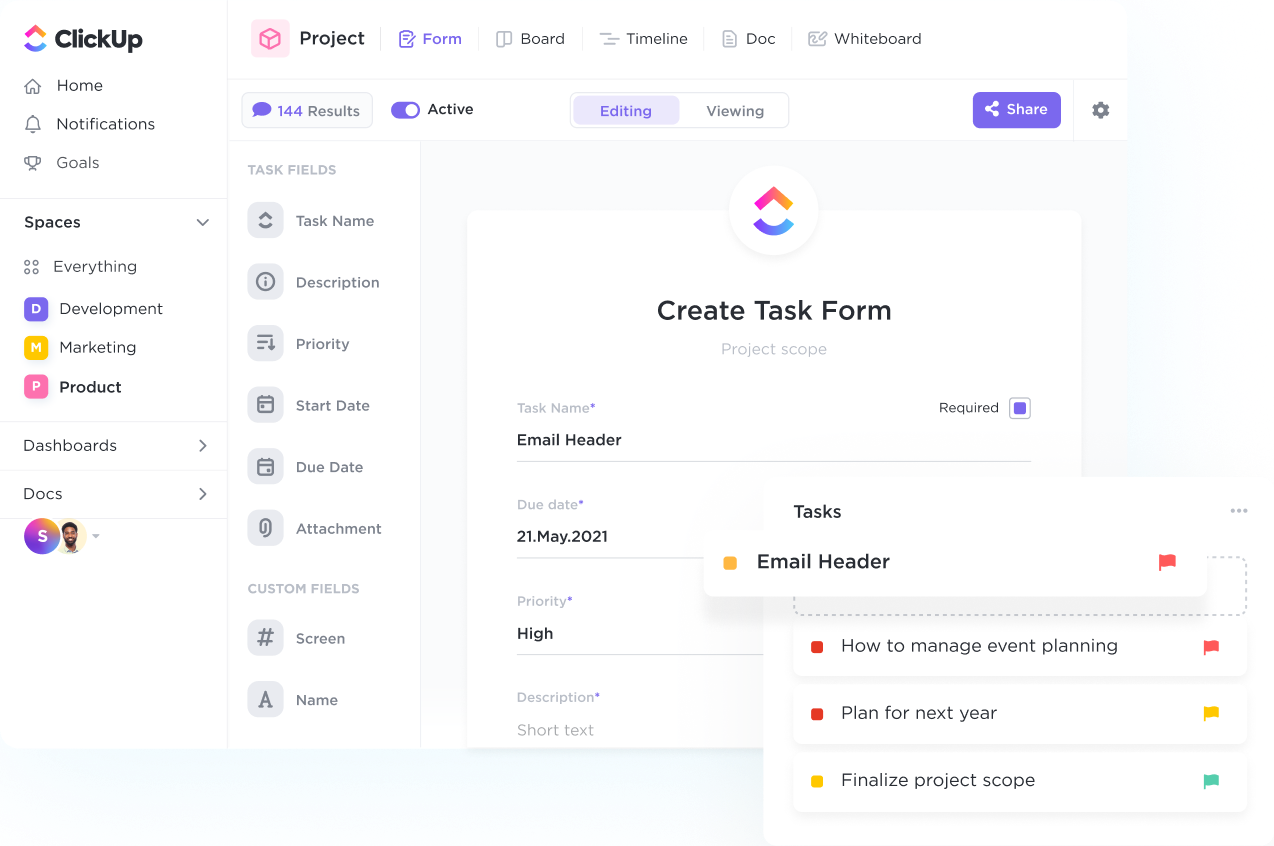Forms
Onboard customers and collect info in a snap.
Streamline your intake process, organize response data, and automatically create tasks with custom branded Forms powered by conditional logic.

Gantt Charts
Revolutionize your customer relationships with ClickUp's customizable CRM system designed specifically for businesses. Streamline your communication, track interactions, and boost sales efficiency all in one place. Say goodbye to scattered data and hello to a centralized platform that empowers your team to deliver top-notch customer service. Try ClickUp now and elevate your CRM game!
Free forever. No credit card.
Forms
Streamline your intake process, organize response data, and automatically create tasks with custom branded Forms powered by conditional logic.

CRM Views
Manage everything from sales pipelines, customer engagement, and orders with ClickUp's 10+ highly flexible views. Easily track and manage your accounts on a List, Kanban Board, Table view, and more.

A CRM provides a unified platform where all customer interactions, from initial contact through various stages of the customer lifecycle, are recorded and easily accessible to all team members. This solves the problem of scattered customer information across different systems or spreadsheets.
CRMs help businesses track and manage customer interactions, including emails, phone calls, meetings, and purchases. By having a centralized system that tracks these interactions, businesses can provide more personalized and targeted customer experiences, leading to improved customer relationships.
CRMs enable better alignment between sales and marketing teams by providing visibility into each team's activities, leads, and customer interactions. This alignment ensures that marketing efforts are targeted towards qualified leads identified by the sales team, resulting in more effective lead generation and conversion.
CRMs automate repetitive tasks such as sending follow-up emails, scheduling appointments, and updating customer records. By automating these processes, businesses can save time, reduce manual errors, and ensure consistency in customer interactions, leading to increased efficiency and productivity.
CRMs provide businesses with valuable insights into customer behavior, preferences, and buying patterns. By tracking and analyzing this data, businesses can make informed decisions, improve their targeting strategies, and identify opportunities for cross-selling or upselling to existing customers.
Key features and benefits of using CRM software include centralizing customer data, automating tasks, improving customer communication, enhancing sales and marketing efforts, and providing valuable analytics for informed decision-making and personalized customer experiences.
CRM software can help improve customer relationships and increase sales by providing a centralized database for customer information, enabling personalized interactions, tracking customer interactions, and streamlining sales processes for more effective lead management and follow-ups.
Best practices for effectively implementing and using CRM software include defining clear goals and requirements, ensuring proper training for users, maintaining data accuracy and consistency, customizing the software to fit your business processes, and regularly evaluating and optimizing your CRM usage for maximum benefits.